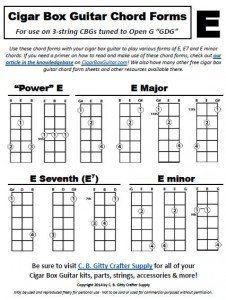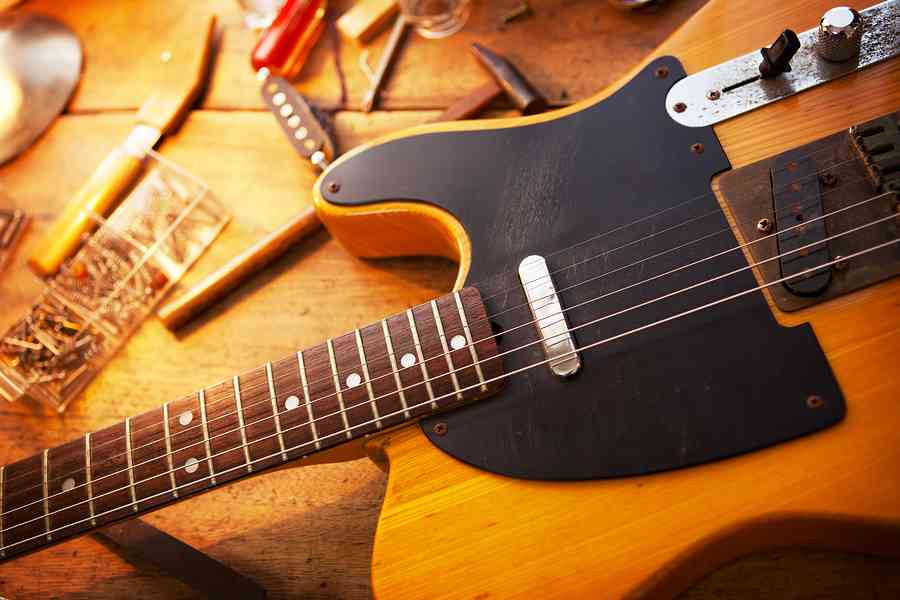Intro to Jazz Guitar Chords
When learning how to play jazz guitar, one of the biggest obstacles many of us face is the seemingly endless amount of jazz guitar chords you need to learn and apply to your jazz guitar comping.
While there are many chords that you can explore as a jazz guitarist, the best place to start is with the easiest to pay, and often the best sounding, shapes on the guitar.
To paraphrase Joe Pass:
If a chord's too difficult, don't play it. Play the easy chords.
In this free jazz guitar primer, you will learn how play 12 chords in each of the four common families of chords:
- Major Chords
- Dominant Chords
- Minor Chords
- Diminished Chords
Having these shapes under your fingers, as well as working them through the various exercises provided in this lesson, will give you the strong foundation you need to move on to more advanced chords in your studies.
To take your study of jazz harmony further, check out my collection of "Jazz Guitar Lessons for All Levels" articles and my "ii-V-I Chord App."
If you are looking to expand your playing further, please visit my other Intro to Jazz articles.
Ok, let's dive in and start by exploring 12 different major jazz guitar chords.
Don't forget to download your FREE Jazz Guitar eBook!
Major Jazz Guitar Chords
To begin your study of jazz guitar chords, let's take a look at the major family of chords.
In the following chord grids, you will find fingerings for 12 different commonly used major family jazz guitar chords.
These chords highlight the maj7, maj6 (often written simply as 6), maj9 and maj6/9 chords.
While these chords have different symbols, think of them as different shades of the same harmonic color, as they can all be used to comp over a maj7 chord symbol when seen in a jazz standard progression.
This means, if you see Cmaj7 written in a chord chart, you can color that chord with C6, Cmaj9 or Cmaj6/9, depending on your tastes and the musical situation.
To see how these chords relate to each other, here is a quick chart guide to the interval structure of the four major family chords in this lesson.
- Maj7 – R-3-5-7
- Maj6 – R-3-5-6
- Maj9 – R-3-5-7-9
- Maj6/9 – R-3-5-6-9
Because the Maj9 and Maj6/9 chords have five notes, and we are focussing on four-note shapes in this lesson, you will be leaving one of those notes out.
This is a common practice by jazz guitarists when it comes to playing jazz chords, as we have less fingers than a pianist to play chords, and so have to pair down chord shapes on the fretboard in order to sound the chord, but make it playable at the same time.
Here are four major family chords with the root on the 6th string that you can study and practice in all 12 keys in the woodshed.

You can also apply the major family of chords to the fretboard with the root on the 5th string, as you can see here in the key of C.
You will notice that the last chord is labelled C6 but contains a 9 in there as well. Over the years I've seen this chord written as both C6 and C6/9, and most often as C6, so I've used that label here.

And here are those same four major family chords with the root on the 4th string, which now gives you 12 different chords that you can apply any time you are comping over a major family chord in a jazz jamming situation.

After you have worked out any/all of these major family shapes on the guitar, try putting on a backing track such as four bars of Cmaj7 to four bars of Fmaj7 and comp between those chords using the shapes in this section of the lesson.
To take these concepts further, please check out my "5 Easy Drop 2 Chords Exercises for Jazz Guitar" lesson.
Dominant Jazz Guitar Chords
You will now move on to the dominant family of chords, which feature the following colors for you to explore in your practice room and on the bandstand.
As was the case with the major family, it is up to your taste and musical background to decide when to use any/all of these colors in your comping phrases.
- 7th – R-3-5-b7
- 9th – R-3-5-b7-9
- 13th – R-3-5-b7-9-11-13
- 7#11 – R-3-5-b7-9-#11
Again, when you have more than four notes in a chord formula, you are able to remove some of those notes in order to pair them down to a four-note grip on the fretboard.
Here are the dominant family chords with the root on the 6th string for you to study, memorize and work in 12 keys around the fretboard.
Here are the Dominant family chords with the root on the 5th string of the guitar for you to check out in the woodshed.

Here are the Dominant family chords with the root on the 5th string of the guitar for you to check out in the woodshed.

Finally, here are the same family of chords, but with the root on the 4th string, and the 7#11 chord introduced for the first time.

Once you have these chords under your fingers, try working on V-I chords in various keys as you begin to bring together the major and dominant family chords in your study.
To continue working these chords further in the practice room, check out my "Dominant Cycles for Jazz Guitar" and "Drop 3 Jazz Guitar Chords" lessons.
Minor Jazz Guitar Chords
You will now explore the minor family of jazz guitar chords, 12 fingerings across three string sets.
These chords features m7, m6, m9 and m11 sounds, and are treated the same way as you would treat any chord color in your comping, with discretion and musical taste.
Here are the different interval formulae for the minor family of chords.
m7 – R-b3-5-b7
m6 – R-b3-5-6
m9 – R-b3-5-b7-9
m6/9 – R-b3-5-6-9
m11 – R-b3-5-b7-9-11
Let's begin your study of the minor family chords with four shapes that have the root on the 6th string.
Again, work these colors in the given key, and then take them around all 12 keys to get a full understanding of how they sound and fit across the neck of the guitar.

You'll now move on to learning minor family chords with the root on the 5th string.

Lastly, let's dig into minor family chords with the root on the 4th string.

When you have worked out any/all of these minor family chord shapes, you can start to combine them with dominant chords to form ii-V progressions, as well as with dominant and major chords to form ii-V-I progressions in your practice routine.
To study these chords further, check out my "Beginner Drop 3 Chords for Jazz Guitar" lesson.
Diminished Jazz Guitar Chords
You are now ready to explore the diminished family in your studies, which contains both half-diminished and fully-diminished chord shapes and colors.
When applying dim7 chords (fully-diminished) to your playing, they often act to outline other more commonly used chords in a jazz standard situation.
An example of this, and one you will see in the exercises below, is playing a dim7 chord from the b9, 3rd, 5th or b7th of a 7th chord in order to turn it into a rootless 7b9 chord.
Though this may sound tricky to pull off, simply find the root of any 7th chord you are playing and play a dim7 chord one fret higher.
This will get you started in applying this concept to the fretboard before taking it to other intervals of dominant chords in your playing.
Here are the interval structures for each diminished family chord in the examples below.
- m7b5 – R-b3-b5-b7
- m11b5 – R-b3-b5-b7-b9-11
- dim7 – R-b3-b5-bb7
As you can see, there are two types of chords being outlined here, m7b5 (half-diminished chords) and dim7 (fully diminished chords), both are members of the diminished family.
This is because they both contain the diminished triad as the first three notes of the chord, R-b3-b5, with various other notes add on top of that triad to form the different colors in the family.
Here are four shapes for diminished family chords with the lowest note on the 6th string for you to explore in the woodshed as you take these chords off the page and onto the fretboard.

You can now move on to studying these diminished family chords with the root on the 5th string of each shape.

Here are the diminished family chords with the root on the 4th string to expand upon in your studies.

Now that you have these diminished based chords under your fingers, you can combine them with the other chord families in this lesson to form major ii V I VI chords as well as minor key ii V I vi progressions to work out in your studies.
To explore these shapes further, check out my "Beginner Drop 2 Jazz Guitar Chords" and "Harmonized Diminished Scales" lessons.
Chord Combination Exercise
Now that you have practiced each chord family on its own, you can work a fun exercise to start to bring each chord family together on the fretboard.
The exercise starts on any Maj7 chord you know, then you simply lower the 7th of that chord to produce a 7th.
From there, you lower the 3rd to produce a m7, lower the 5th from there to produce a m7b5 and finally lower the 7th again to produce a dim7 chord.
Here is an example of that exercise, with the moving note in blue so you can see that note across the 5 different chords in the exercise.
Try working this exercise on your guitar, and pay close attention to the moving note, as this will allow you to move this exercise to other keys, as well as see the relationship between chord families clearly on the fretboard.
Click to hear audio Jazz Gutiar Chord Example 1

Now that you have explored this sample chord combination exercise, try taking these shapes to all 12 keys across the fretboard.
As well, apply this exercise to any string set, or chord color, you have learned so far in the woodshed.
To explore these chord combinations further, check out my "Beginner Drop 3 Turnaround Chords" and "Beginner Drop 2 Turnaround Chords" lessons.
Major ii V I Comping Examples
After you have worked on these various chord shapes on their own, you are ready to apply them to a chord progression in your studies.
Here is an exercise I like to do, which is outlined in step form for you to check out in your own jazz guitar practice routine.
- Pick a chord progression, such as ii-V-I-VI
- Use any chord you know for the first change, such as Dm7 in the example below
- From there, move to the closest possible V7 chord, and continue this close movement throughout the changes
- Repeat in all 12 keys
To begin, here is a sample progression using various chords from this lesson. I have tried to move to the closest next chord in the progression, so avoiding any unnecessary jumps, as I work through the changes.
When you have this progression worked out and memorized, try running it in 12 keys, or applying it to a tune you are working on, in order to take it a step further in your studies.
Click to hear audio Jazz Gutiar Chord Example 2

Here is a second example of the same concept with a different set of chords being used to outline the ii-V-I-VI chord progression.
Click to hear audio Jazz Gutiar Chord Example 3

Now that you have run through these two sample chord progressions, come up with your own ways to use the chords in this lesson to comp over ii-V-I-VI chords in the woodshed.
To study this chord progression further, please visit my "Major ii V I Voice Leading" and "20 Ways to Comp ii V I's" lessons.
Minor ii V I Comping Examples
Here is the minor version of that same exercise, with the ii being m7b5, the V7b9 being a dim7 chord, and the I being a minor chord.
To begin, here is a sample of chords from this lesson being applying to that progression, which you can study in 12 keys around the fretboard.
Click to hear audio Jazz Gutiar Chord Example 4

As well, here is a second example to check out on a different string set, with the same concepts applied to the changes.
Click to hear audio Jazz Gutiar Chord Example 5

With both major and minor ii-V-I's under your fingers, try putting on a backing track for Autumn Leaves and comping over that tune.
Autumn Leaves is a great vehicle for working these chords, as it features long-form ii-V-I's in both major and minor keys in its progression.
To study this chord progression further, check out my "Minor ii V I Voice Leading Video" and "Minor ii V I Triads" lessons.
Jazz Guitar Chord Practice Guide
To help you get these shapes under your fingers and into your ears, here are 5 of my favorite ways to practice chords in the woodshed.
- Play a chord on the guitar and sing any/all notes in that chord shape
- Find a tune such as Watermelon Man, which focuses on one chord type, 7th, in a few keys and use that as a vehicle to practice any chord grips you are studying
- Take a tune such as Tune Up, and work various combinations of ii-V-I chords over that progression in the woodshed
- Pick a rhythm, one you know or learn one from a tune, and apply that rhythm to any ii V I or chord progression you are studying
- Sing the root note and play all of the chords in a single family in order to hear how those chords sound similar, yet different, when played over the same root note
To look at how to practice jazz guitar chords further, check out my "Ted Greene Chord Concepts for Guitar" lesson and "Modern Time – Rhythmic Fundamentals" eBook.
Do you have any questions about this Intro to Jazz Guitar Chords lesson? Share your thoughts in the comments section below.



















 The dominant 7th chord is the most common used chord in blues.
The dominant 7th chord is the most common used chord in blues.





















